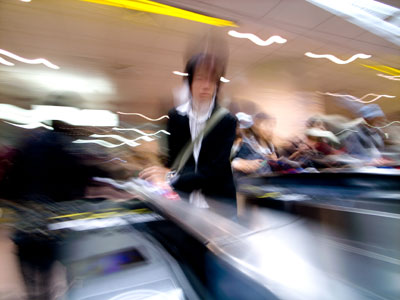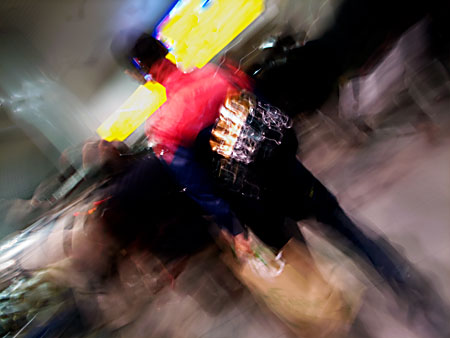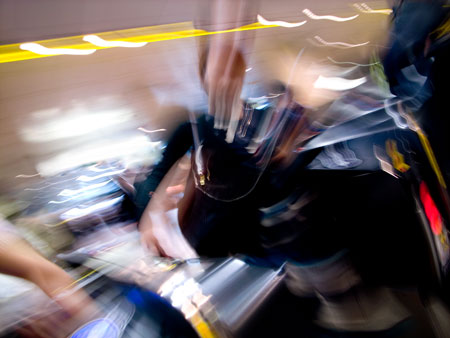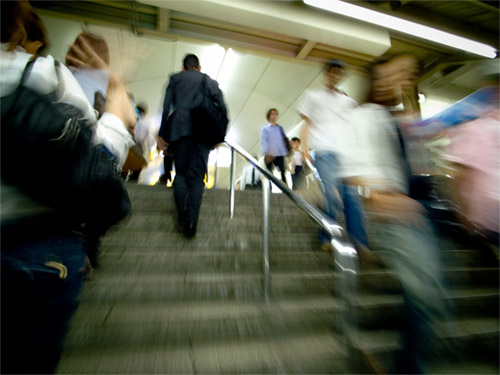I like the idea of photography being a documentary tool, but documentary according to what? We all perceive ideas and images in various ways, so it’s pretty hard to set down a specific definition of Street Photography. Tokyo is probably one of the best places in the World to make street images. The number and styles of people spread throughout the city is endless and sets an excellent stage for your humble photographer narrator.

My day to day routine in Tokyo involves taking the train from Komaba and changing in Shibuya, one of the busiest stations in Tokyo. This affords daily opportunities to exercise one of my favorite photography styles – capturing Frozen Motion of folks heading hither and thither.
Cameras are by default used to capture static moments in time. This often entails sharp, defined images where you can clearly see what the photographer saw. Or was it only what was recorded by the machine? My mind doesn’t always percieve street photography as a static scene. I want to see the unseen image, the one I didn’t know was there – the Motion. I want to take an image with my camera to see what it will look like. Capturing motion is pretty easy, you just reduce the shutter speed such that the resulting images capture enough definition so everything isn’t a total blur.
The Ricoh GRD is pretty much the perfect camera for street shooting, save for the long RAW write time – in which case the Ricoh GX100 or the new Ricoh GRD2 is probably the best camera available for these types of boredom deflecting activities. With the wide angle 21 mm lens attachment you can pull in a very wide scene, with colors and motion from everywhere in front of the lens.

Motion capture can be very cool, but it’s also very easy to make mediocre images this way. To my eye, if there’s just enough blur to make the image appear unfocused, but not enough for any colors to mix with one another, it’s just a waste of memory card space.
Many Japanese wear conservative suits to the offices, and when mixed together this renders a sea of grey. The element I look for is something with a bright color, a hand bag, a light colored box, something that will stand out in the sea.
The second element I hunt for is mixed motion. If you just stand there and shoot, all the motion is in one direction, one or two of these shots are cool if you’ve never used this technique before – but gets old crazy fast. I like capturing motion from different directions.

In Shibuya, I usually head up the stairs and position myself on the edge of the up and down directions, then I can focus on someone with a non-standard element (color, geometry) and pan on them while I’m walking past. This means that the image is a combination of them getting closer to me while my camera is rotating, if I’m lucky I can catch one element of their person in reasonable focus – like a hand or bag. If executed with exacting imprecision this results in an element popping out from the chaos.
The Frozen Motion technique works for me because it’s the scene which I want to capture for Street Photography. The important element isn’t capturing and documenting the scene exactly as it occurred, I want to paint with the motion, get the random colors mixing – chaos going and freeze it in-camera.
You can try stretching the image and using motion blur filters in Photoshop, but for my taste it’s like using a Lens Baby instead of a Holga, there’s no randomness to the image – it’s all been over-engineered, and hence – boring to my eyes.
